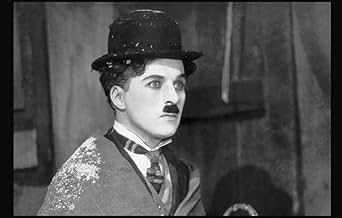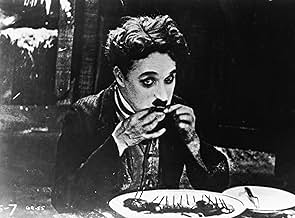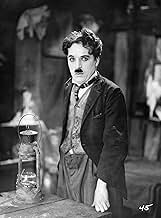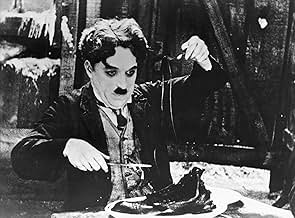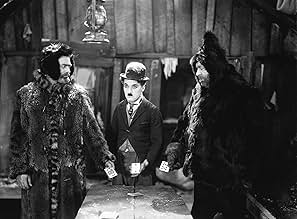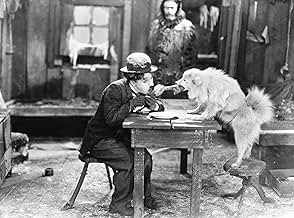CALIFICACIÓN DE IMDb
8.1/10
123 k
TU CALIFICACIÓN
Un buscador de oro se va en busca de fortuna al Klondike, y encuentra oro y mucho más.Un buscador de oro se va en busca de fortuna al Klondike, y encuentra oro y mucho más.Un buscador de oro se va en busca de fortuna al Klondike, y encuentra oro y mucho más.
- Dirección
- Guionista
- Elenco
- Nominado a 2 premios Óscar
- 7 premios ganados y 3 nominaciones en total
Jack Adams
- Man in Dance Hall
- (sin créditos)
Frank Aderias
- Eskimo Child
- (sin créditos)
Leona Aderias
- Eskimo Child
- (sin créditos)
Lillian Adrian
- Woman in Dance Hall
- (sin créditos)
Sam Allen
- Man in Dance Hall
- (sin créditos)
Claude Anderson
- Man in Dance Hall
- (sin créditos)
Harry Arras
- Man in Dance Hall
- (sin créditos)
Albert Austin
- Prospector
- (sin créditos)
F.J. Beauregard
- Man in Dance Hall
- (sin créditos)
Marta Belfort
- Woman in Dance Hall
- (sin créditos)
William Bell
- Man in Dance Hall
- (sin créditos)
Francis Bernhardt
- Man in Dance Hall
- (sin créditos)
- Dirección
- Guionista
- Todo el elenco y el equipo
- Producción, taquilla y más en IMDbPro
Argumento
¿Sabías que…?
- TriviaSir Charles Chaplin stated that this was the film by which he most wanted to be remembered.
- ErroresWhen Big Jim is delirious and thinks The Lone Prospector is a chicken, The Lone Prospector removes a knife from the table and hides it in the bed. In one of the next shots, the knife is back on the table. Then in the next shot, it is gone again.
- Versiones alternativasThere is a 1942 re-issue version, prepared by Charles Chaplin himself, which uses his own narration, music score, and editing (running time: 72 minutes). This version is the only one which has its copyright owned by the Chaplin Film company. Many scenes of the 1942 version derived from an alternate camera that was shooting simultaneously. This explains some of the very slight differences in camera angle, although Chaplin also deleted some footage in order to tighten the pacing (such as Big Jim and the Tramp's near-encounter in the Gold Rush town and the shot of a woman comforting another woman during the singing of "Auld Lang Syne".
- ConexionesEdited into Werner Herzog Eats his Shoe (1980)
Opinión destacada
This silent classic has many strong points - it has a lot of humor, interesting characters, a good story and good settings. It's the kind of film that shows how much a master film-maker can communicate in a silent movie. It overdoes the sentimentality on occasion, but other than that it's a fine film.
Chaplin himself plays the 'Lone Prospector', and he is joined by several other interesting characters in a frozen north setting that sets up some good adventures and drama. There are some memorable scenes in the prospectors' rickety cabins, plus some other good material.
The version of this that is the easiest to find is the one that Chaplin re-edited in the 1940's, adding his own narration and deleting the title cards, which gives it a slightly different feel. (These revisions probably make it a bit easier to follow for those who aren't used to silent films.) You can tell from Chaplin's narration how fond he must have been of "The Gold Rush", and he had a lot of good reasons to be pleased with it. There are a couple of his later films that might be even better and more timeless, but this one contains everything that defined Chaplin and his art.
Chaplin himself plays the 'Lone Prospector', and he is joined by several other interesting characters in a frozen north setting that sets up some good adventures and drama. There are some memorable scenes in the prospectors' rickety cabins, plus some other good material.
The version of this that is the easiest to find is the one that Chaplin re-edited in the 1940's, adding his own narration and deleting the title cards, which gives it a slightly different feel. (These revisions probably make it a bit easier to follow for those who aren't used to silent films.) You can tell from Chaplin's narration how fond he must have been of "The Gold Rush", and he had a lot of good reasons to be pleased with it. There are a couple of his later films that might be even better and more timeless, but this one contains everything that defined Chaplin and his art.
- Snow Leopard
- 5 ago 2001
- Enlace permanente
Selecciones populares
Inicia sesión para calificar y agrega a la lista de videos para obtener recomendaciones personalizadas
- How long is The Gold Rush?Con tecnología de Alexa
Detalles
- Fecha de lanzamiento
- País de origen
- Sitios oficiales
- Idiomas
- También se conoce como
- The Gold Rush
- Locaciones de filmación
- Productora
- Ver más créditos de la compañía en IMDbPro
Taquilla
- Presupuesto
- USD 923,000 (estimado)
- Total a nivel mundial
- USD 31,490
- Tiempo de ejecución1 hora 35 minutos
- Color
- Mezcla de sonido
- Silent(original release)
- Relación de aspecto
- 1.33 : 1
Contribuir a esta página
Sugiere una edición o agrega el contenido que falta

Principales brechas de datos
By what name was La quimera del oro (1925) officially released in India in English?
Responda

